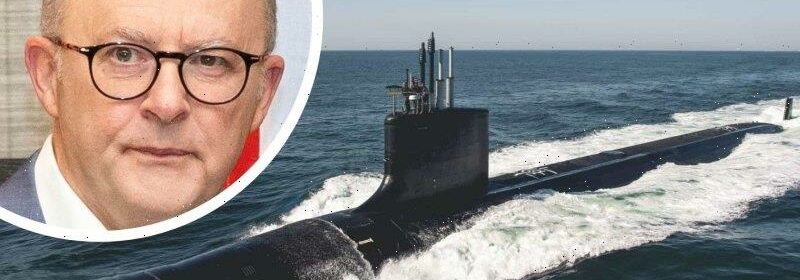Extraordinary cost of submarine program reveals a confronting truth

The numbers are so big they make your eyes wince and your breath catch in your throat.
It turns out all the impressive-sounding figures the experts have been using to estimate the cost of acquiring a fleet of nuclear-powered submarines – perhaps $100 billion, or maybe $200 billion – were low-balling it.
Instead, taxpayers can expect to spend between $268 to $368 billion over the next 30 years to develop a fleet of eight nuclear-powered submarines.
Overnight, news broke that the government would not provide a headline figure of the long-term cost of the new submarines. Instead, it would only provide a cost over the next four years and a vague estimate of the project’s eventual share of gross domestic project.
In the end, courage prevailed. To its credit, the Albanese government decided not to hide the figure it knew everyone was desperate to know. Rather than obfuscation, it opted for radical honesty.
In doing so, it has delivered a course of electroshock therapy to the Australian public. The point of the exercise: to reveal the confronting truth that we are not at war, but neither are we at peace. Almost $400 billion, even over three decades, is not peacetime spending in anybody’s book – a fact government ministers concede privately.
Rather, we are navigating a dangerous and unpredictable new grey zone of superpower rivalry between China and the United States. It’s a contest in which we are poised to be a central player despite our geographical isolation and relatively small population.
Accepting such a role will require tough spending decisions the nation as a whole is not yet ready to confront. Already, Opposition Leader Peter Dutton is flagging his willingness to support reduced spending on the National Disability Insurance Scheme to pay for the submarine program. Other unsettling tradeoffs will need to be discussed.
Even in the short term, before the big bills start arriving, difficult calls will have to be made. The submarine program is expected to cost $9 billion over the next four years, but the government believes the net cost to the defence budget will be zero.
That’s because – on top of the $6 billion saved by not proceeding with the previous French submarine deal – it will cut $3 billion from existing defence programs. More cuts will come with the release of the Defence Strategic Review next month. This is likely to anger other branches of the military, such as the Army, while the Navy is lavished with money.
When announcing the details of the submarine program in San Diego, US President Joe Biden said the world stands at an inflection point in history. It’s a line he often uses, but on this day it cut through with new resonance. The monumental price tag of the AUKUS pact has made it clear. We are not at war, but neither are we at peace.
Cut through the noise of federal politics with news, views and expert analysis from Jacqueline Maley. Subscribers can sign up to our weekly Inside Politics newsletter here.
Most Viewed in Politics
From our partners
Source: Read Full Article